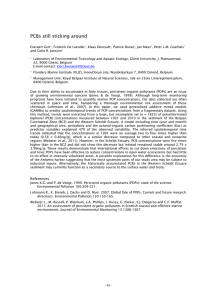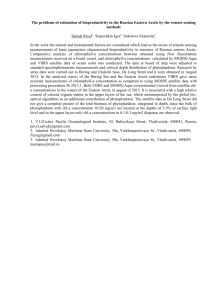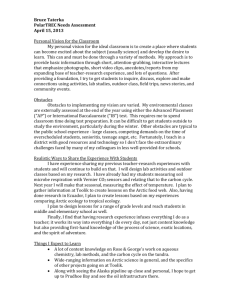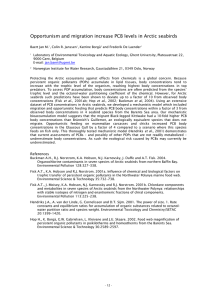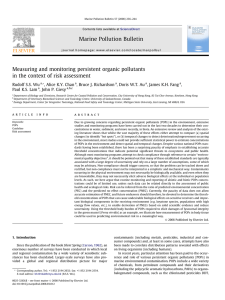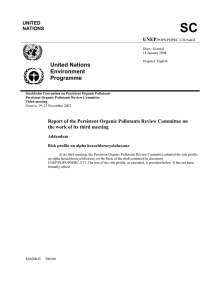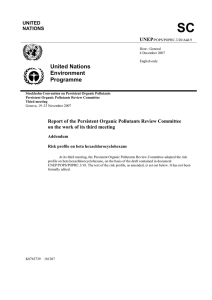COCKTAILS IN THE ARCTIC: ARE THE POLAR BEARS LOADED YET?
advertisement
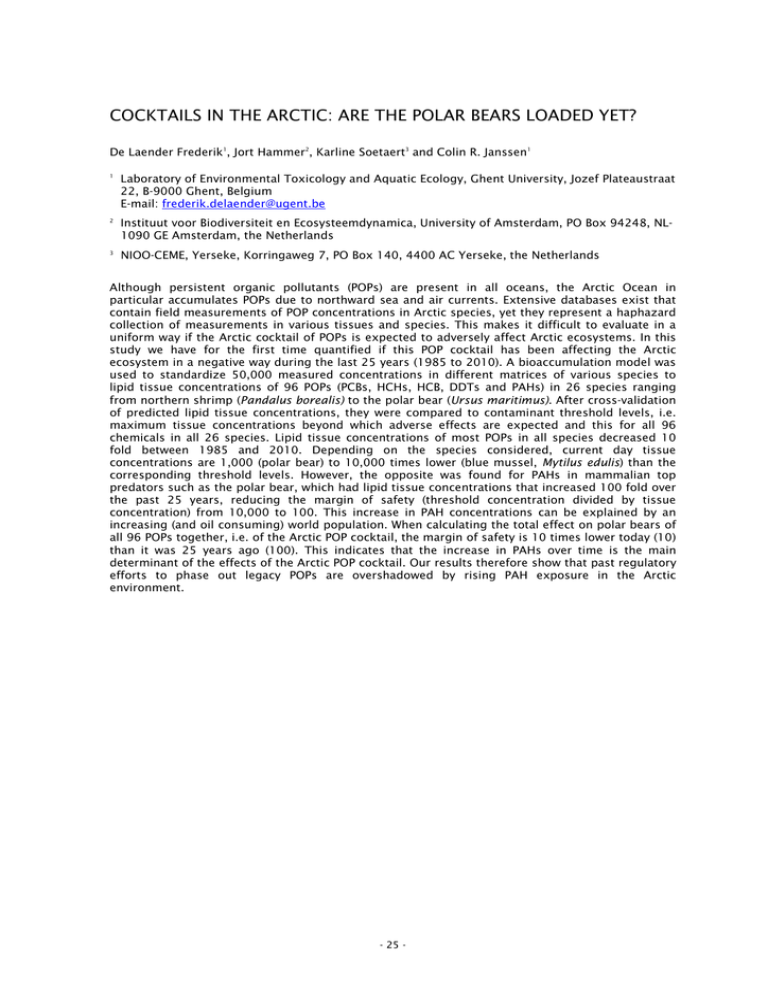
COCKTAILS IN THE ARCTIC: ARE THE POLAR BEARS LOADED YET? De Laender Frederik1, Jort Hammer2, Karline Soetaert3 and Colin R. Janssen1 1 Laboratory of Environmental Toxicology and Aquatic Ecology, Ghent University, Jozef Plateaustraat 22, B-9000 Ghent, Belgium E-mail: frederik.delaender@ugent.be 2 Instituut voor Biodiversiteit en Ecosysteemdynamica, University of Amsterdam, PO Box 94248, NL1090 GE Amsterdam, the Netherlands 3 NIOO-CEME, Yerseke, Korringaweg 7, PO Box 140, 4400 AC Yerseke, the Netherlands Although persistent organic pollutants (POPs) are present in all oceans, the Arctic Ocean in particular accumulates POPs due to northward sea and air currents. Extensive databases exist that contain field measurements of POP concentrations in Arctic species, yet they represent a haphazard collection of measurements in various tissues and species. This makes it difficult to evaluate in a uniform way if the Arctic cocktail of POPs is expected to adversely affect Arctic ecosystems. In this study we have for the first time quantified if this POP cocktail has been affecting the Arctic ecosystem in a negative way during the last 25 years (1985 to 2010). A bioaccumulation model was used to standardize 50,000 measured concentrations in different matrices of various species to lipid tissue concentrations of 96 POPs (PCBs, HCHs, HCB, DDTs and PAHs) in 26 species ranging from northern shrimp (Pandalus borealis) to the polar bear (Ursus maritimus). After cross-validation of predicted lipid tissue concentrations, they were compared to contaminant threshold levels, i.e. maximum tissue concentrations beyond which adverse effects are expected and this for all 96 chemicals in all 26 species. Lipid tissue concentrations of most POPs in all species decreased 10 fold between 1985 and 2010. Depending on the species considered, current day tissue concentrations are 1,000 (polar bear) to 10,000 times lower (blue mussel, Mytilus edulis) than the corresponding threshold levels. However, the opposite was found for PAHs in mammalian top predators such as the polar bear, which had lipid tissue concentrations that increased 100 fold over the past 25 years, reducing the margin of safety (threshold concentration divided by tissue concentration) from 10,000 to 100. This increase in PAH concentrations can be explained by an increasing (and oil consuming) world population. When calculating the total effect on polar bears of all 96 POPs together, i.e. of the Arctic POP cocktail, the margin of safety is 10 times lower today (10) than it was 25 years ago (100). This indicates that the increase in PAHs over time is the main determinant of the effects of the Arctic POP cocktail. Our results therefore show that past regulatory efforts to phase out legacy POPs are overshadowed by rising PAH exposure in the Arctic environment. - 25 -
